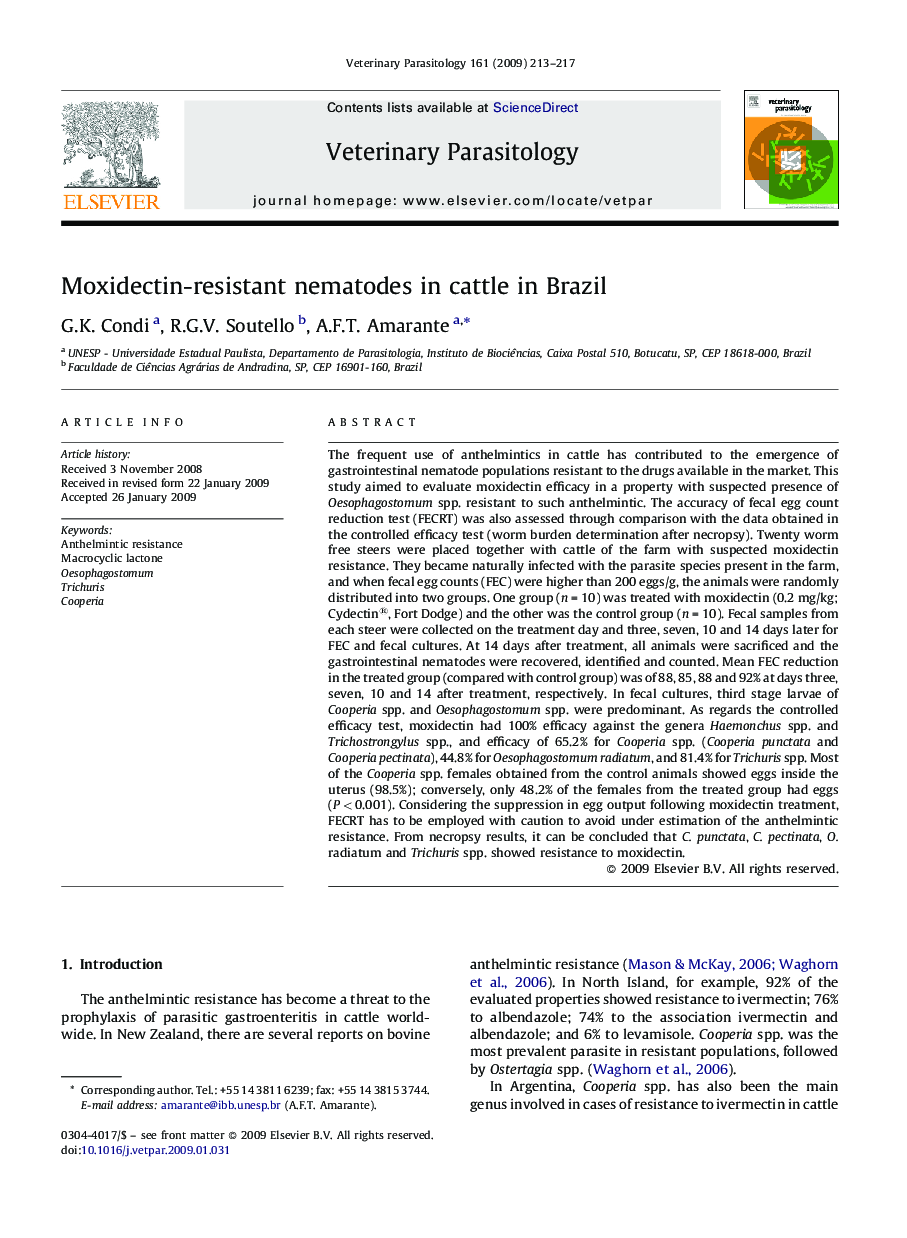| کد مقاله | کد نشریه | سال انتشار | مقاله انگلیسی | نسخه تمام متن |
|---|---|---|---|---|
| 2471139 | 1555755 | 2009 | 5 صفحه PDF | دانلود رایگان |

The frequent use of anthelmintics in cattle has contributed to the emergence of gastrointestinal nematode populations resistant to the drugs available in the market. This study aimed to evaluate moxidectin efficacy in a property with suspected presence of Oesophagostomum spp. resistant to such anthelmintic. The accuracy of fecal egg count reduction test (FECRT) was also assessed through comparison with the data obtained in the controlled efficacy test (worm burden determination after necropsy). Twenty worm free steers were placed together with cattle of the farm with suspected moxidectin resistance. They became naturally infected with the parasite species present in the farm, and when fecal egg counts (FEC) were higher than 200 eggs/g, the animals were randomly distributed into two groups. One group (n = 10) was treated with moxidectin (0.2 mg/kg; Cydectin®, Fort Dodge) and the other was the control group (n = 10). Fecal samples from each steer were collected on the treatment day and three, seven, 10 and 14 days later for FEC and fecal cultures. At 14 days after treatment, all animals were sacrificed and the gastrointestinal nematodes were recovered, identified and counted. Mean FEC reduction in the treated group (compared with control group) was of 88, 85, 88 and 92% at days three, seven, 10 and 14 after treatment, respectively. In fecal cultures, third stage larvae of Cooperia spp. and Oesophagostomum spp. were predominant. As regards the controlled efficacy test, moxidectin had 100% efficacy against the genera Haemonchus spp. and Trichostrongylus spp., and efficacy of 65.2% for Cooperia spp. (Cooperia punctata and Cooperia pectinata), 44.8% for Oesophagostomum radiatum, and 81.4% for Trichuris spp. Most of the Cooperia spp. females obtained from the control animals showed eggs inside the uterus (98.5%); conversely, only 48.2% of the females from the treated group had eggs (P < 0.001). Considering the suppression in egg output following moxidectin treatment, FECRT has to be employed with caution to avoid under estimation of the anthelmintic resistance. From necropsy results, it can be concluded that C. punctata, C. pectinata, O. radiatum and Trichuris spp. showed resistance to moxidectin.
Journal: Veterinary Parasitology - Volume 161, Issues 3–4, 12 May 2009, Pages 213–217